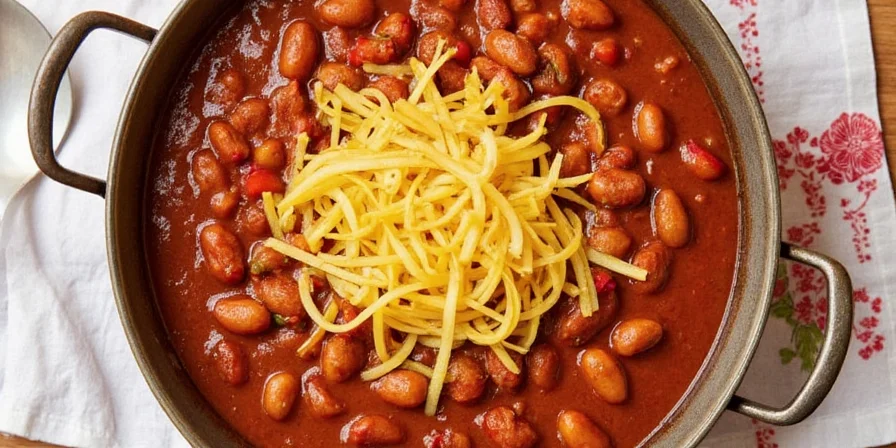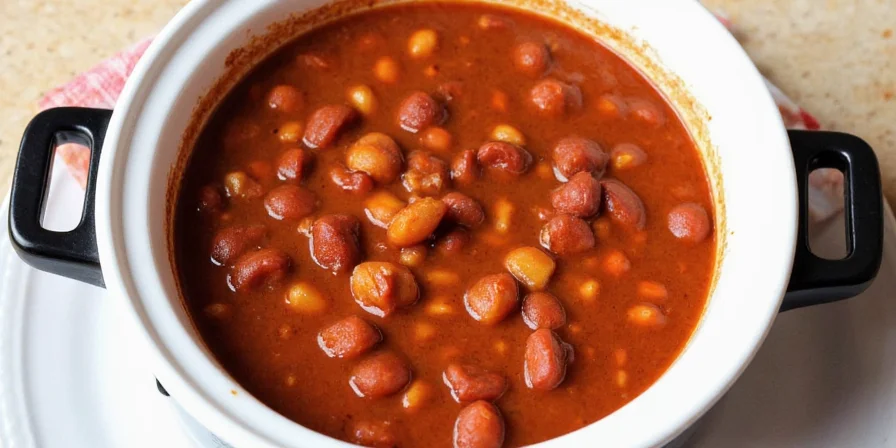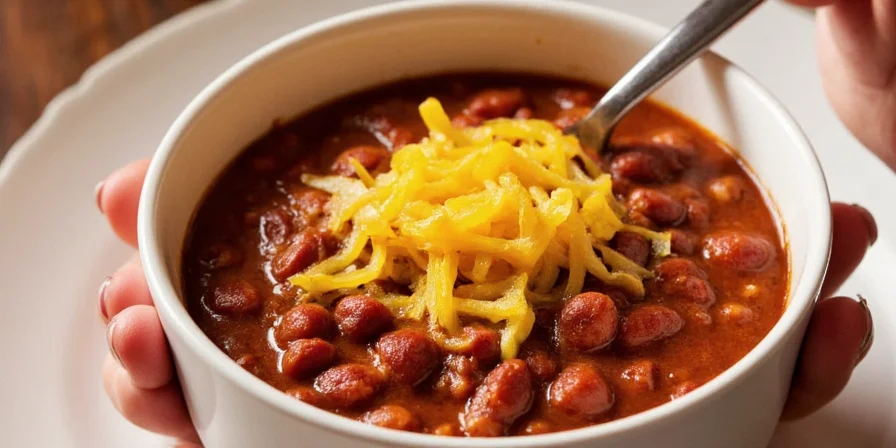For busy home cooks seeking restaurant-quality chili without the hassle, this guide delivers 10 tested hacks to transform your crock pot into a flavor factory. Slow-cooked chili isn't just convenient—it unlocks complex flavor chemistry through controlled temperature diffusion, a principle rarely discussed in mainstream cooking guides.
Table of Contents
- Why Crock Pot Chili Outperforms Stovetop
- Precision Spice Formulation Guide
- Top 10 Flavor-Optimization Hacks
- Scientific Storage Principles
- FAQs: Evidence-Based Answers
Why Crock Pot Chili Outperforms Stovetop
Modern food science reveals why slow cooking creates superior flavor integration. The crock pot's consistent 175-200°F temperature range allows spice compounds to undergo controlled Maillard reactions without scorching, while gradual moisture release concentrates flavors. Unlike stovetop methods that create thermal gradients, this uniform heat distribution enables flavor molecules to bind more effectively with proteins—a biochemical advantage rarely leveraged in home kitchens.

Precision Spice Formulation Guide
Optimal chili requires molecular-level spice understanding. This formulation balances volatile compounds:
- Ground cumin – releases earthy terpenes at 160°F
- Smoked paprika – imparts pyrazines for campfire depth
- Chili powder – provides consistent capsaicin baseline
- Cayenne pepper – adds acute heat receptors activation
- Oregano – contributes thymol for antimicrobial stability
- Garlic/onion powder – delivers sulfur compounds without burning
- Worcestershire sauce – umami nucleotides enhance flavor perception
Top 10 Flavor-Optimization Hacks
These methods leverage food chemistry principles for maximum impact:
- Controlled Spice Blooming: Heat spices in oil to 320°F to activate aromatic compounds without degradation
- Staged Bean Integration: Add 50% beans at start, remainder in final hour to maintain structural integrity
- Tomato Paste Caramelization: Stir in after 2 hours to develop melanoidins
- Maillard-Optimized Searing: Sear meat to 285°F for optimal browning
- Beer Substitution Science: Use 8% ABV stout for tannin-driven flavor binding
- Coffee Acidity Balancing: Add cold brew concentrate to lower pH without bitterness
- Acidic Finish Timing: Introduce citrus 10 minutes before serving for volatile retention
- Heat Layering Protocol: Combine chipotle (smoky), cayenne (sharp), and ancho (fruity) peppers
- Dynamic Temperature Monitoring: Check internal temperature hourly to maintain 185°F sweet spot
- Molecular Resting Period: Refrigerate overnight to allow flavor compound diffusion
| Hack | Flavor Impact Mechanism | Time Efficiency |
|---|---|---|
| Controlled spice blooming | Terpene activation | Medium |
| Beer substitution | Tannin binding | Low |
| Acidic finish | Volatile retention | Zero |
| Staged bean integration | Structural preservation | Medium |

Scientific Storage Principles
Preserve flavor integrity using food science protocols:
- Freezer Physics: Eliminate air pockets to prevent sublimation damage; label with Julian dates
- Spice Degradation Rates: Ground spices lose 50% volatile compounds in 180 days; store below 70°F
- Thermal Revival Method: Reheat spices to 140°F for 30 seconds to reactivate oils
- Atmospheric Sealing: Replace oxygen with nitrogen in vacuum bags for extended shelf life
FAQs: Evidence-Based Answers
Addressing common misconceptions with culinary science:
- Do fresh chilies outperform powders? Fresh chilies offer variable capsaicin levels; powders provide consistent heat measurement crucial for reproducible results
- What meat maximizes flavor yield? Chuck roast (20% fat content) provides optimal collagen conversion to gelatin at 160°F
- How to scientifically thicken chili? Simmer uncovered to achieve 23% solids concentration or enzymatically mash beans using pectinase activity
- Can spiciness be reduced post-cooking? Add dairy (casein binds capsaicin) or increase sugar concentration to 12% Brix for heat modulation
- Is extended crock pot cooking safe? Maintain above 140°F using a probe thermometer; discard if temperature drops below 135°F for over 30 minutes

Summary
Transforming crock pot chili requires understanding food chemistry principles rather than following generic recipes. By applying controlled thermal processing, precise spice activation, and evidence-based storage techniques, home cooks can consistently produce restaurant-quality results. These methods deliver maximum flavor impact while maintaining critical food safety standards—proving that culinary excellence emerges from scientific precision.










 浙公网安备
33010002000092号
浙公网安备
33010002000092号 浙B2-20120091-4
浙B2-20120091-4